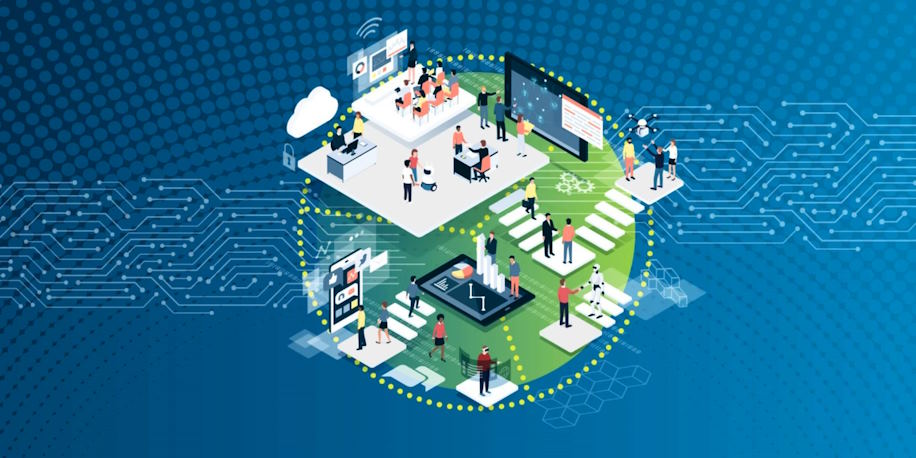Home » Global Business Landscape » The Evolution of Workplace Dynamics: Adapting to a Hybrid Future
The Evolution of Workplace Dynamics: Adapting to a Hybrid Future

The business landscape has undergone a seismic shift, propelled by technological advancements and changing workforce preferences. The workplace concept has evolved through this transformation, embracing hybrid models that blend remote work with in-person collaboration. This article explores the burgeoning trend of hybrid work setups, analyzing its impact on business employees and the strategies essential for thriving in this new paradigm.
The Rise of Hybrid Work
The pandemic accelerated the adoption of remote work, revealing its viability and benefits. As restrictions eased, businesses recognized the potential of hybrid models—offering flexibility while maintaining the advantages of in-person interactions. This approach fosters work-life balance, expands talent pools, and reduces overhead costs, presenting a win-win for employers and employees.
Impact on Business Dynamics
Hybrid work arrangements necessitate a recalibration of traditional business dynamics. Companies must reimagine office spaces to accommodate collaboration and remote connectivity. Additionally, leadership styles are evolving to emphasize trust, communication, and outcome-based performance rather than mere presence in the office.

Employee Empowerment and Challenges
The hybrid model empowers employees by granting flexibility in managing their work schedules and environments. However, it also presents challenges such as maintaining team cohesion, addressing digital disparities, and ensuring equitable opportunities for remote and in-person staff.
Strategies for Success in a Hybrid Environment
- Technological Integration: Investing in robust digital infrastructure and tools to facilitate seamless collaboration and communication.
- Redefined Leadership: Embracing empathetic and inclusive leadership styles prioritizing trust, flexibility, and clear communication.
- Flexibility and Adaptability: Creating policies accommodating diverse work preferences while maintaining organizational cohesion and productivity.
The hybrid work model marks a pivotal shift in how businesses operate and how employees engage with work. Embracing this evolution requires a holistic approach amalgamating technological advancements, flexible policies, and adaptive leadership. As businesses navigate this transformative phase, those adept at leveraging remote and in-person work strengths are poised to thrive in this dynamic and ever-evolving business landscape.
You may also like
About
Discover the narratives that define the global economic stage. From diplomatic dialogues to trade partnerships, our blog unveils the stories behind economic development and international relations.































